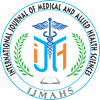A Retrospective Study on Clinical Presentation and Features of Refractive Accommodative Esotropia among Children and Its Significance with Ocular Profile
Pages : 24-29Download PDF
Purpose: To report the ocular profile of children with refractive accommodative esotropia.
Material & Methods: It was a retrospective observational study with a sample size of 162 subjects presenting at Centre for Sight and diagnosed with refractive accommodative esotropia in the age group of 3 years and above. A thorough eye examination of the patients was done and the full cycloplegic refractive correction was prescribed. The patients were called for follow-up with prescribed glasses to assess the visual acuity and deviation with Rx. The features studied were ocular alignment with correction in subsequent follow-ups, amblyopia, high AC/A ratio and anisometropia >1.50D. The statistical analysis was done by using Chi-square test in SPSS version 21. Result: Demographic data of 162 subjects with refractive accommodative esotropia was collected. At presentation 33.53% of the children were amblyopic, 9.58% were having anisometropia > 1.5D, and 7.78% were having high AC/A ratio. The visual acuity and spherical error of both eyes were found to be statistically similar. At a mean follow-up of 122 days, the deviation was reassessed, and a significant correlation was found between aided visual acuity and aided near Estropia, ET (74.07%) as well as aided distance ET (77.78%), & non-significant correlation was found between max spherical errors and aided near ET as well as aided distance ET. It was also observed that few cases had an increase in deviation which may be a result of wrong refractive correction, the patient being uncooperative, delayed follow-up, or non-compliance to glass wear. All factors mentioned were found to be statistically significant (p<0.05) with the Chi-square test in SPSS version 21.
Conclusion: This study tells us about what should be seen in the ocular profile of children with refractive accommodative esotropia. To get a particular trend in the ocular profile of patients with refractive accommodative esotropia a prospective study with more parameters like stereopsis, near visual acuity, regular follow-up, compliance to glass wear, correction of refractive error, and change in deviation is required.





